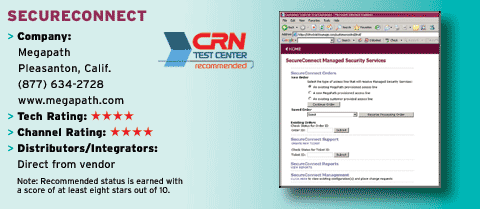Linksys Creates A Winner With Its Draft 802.11N Product Line
networking broadband 802.11n PC Card
The IEEE 802.11n standard promises enormous increases in cumulative wireless speeds and distances by the use of MIMO (multiple input, multiple output) spatial multiplexing techniques. The standard aims for link rates of 150 Mbps and 300 Mbps, which could translate to real-world speeds of up to 150 Mbps. The current draft of the 802.11n standard was approved for letter ballot in March, with the full standard to be ratified by the second quarter of 2007.
The draft standard allows vendors to finally produce 802.11n products that will offer interoperability (across vendors) and eliminate the problems associated with the first generation of pre-n wireless products that flooded the market last year.
Linksys is the first vendor to ship products based on the draft 802.11n standard, but other vendors are on its heels, and in a few weeks, several draft 802.11n products will be available from various vendors.
CRN Test Center engineers tested Linksys' products and were pleasantly surprised by the increased performance. In fact, the WRT300n paired with the WPC300n proved to be one of the fastest wireless products ever tested by the Test Center, with raw throughput speeds of almost 120 Mbps. Of course, that level of throughput was accomplished in a sterile, controlled environment, and real-world results tell another story.
The 802.11n standard accomplishes higher speeds by using a larger swath of the wireless frequencyin this case, 40MHz. On the other hand, 802.11b/g need only 20MHz of wireless bandwidth. Therein lies one of the problems encountered with real-world testing: In mixed-mode environments (802.11n with 802.11g), speeds dropped off significantlymaximum throughput fell to less than 50 Mbps. Although that is a significant drop, it was still manifold over the real-world speeds offered by 802.11 b/g systems.
One other issue with mixed-mode environments is that Linksys' products tend to overwhelm other devices. For example, an 802.11g card connected to an 802.11g router in the same vicinity frequently lost its association. With that in mind, solution providers may want to carefully consider deployment issues with these products to ensure they are not preventing other networks from functioningan important consideration in multitenant environments.
On the feature side, the WRT300n offers all the bells and whistles one would expect in a broadband router. The unit boasts an integrated firewall, Network Address Translation (NAT), port forwarding and VPN passthrough. It is configured using a friendly, browser-based management console.
The WPC300n PC Card uses a simple plug-and-play scheme to work with a Windows XP machine. Test Center engineers also were able to successfully install the WPC300n on a beta version of Windows Vista.
Even with the improved features, compatibility may be an issue. The Linksys products are still only draft implementations, and although the IEEE has backed draft 802.11n, things could change. Other vendors may not implement the draft standard the same way, creating a whole other market of incompatible devices, just like what occurred with pre-n products.
For solution providers, it comes down to a basic decision: speed vs. compatibility. Linksys covers the speed portion of the equation like no other, but compatibility could be a sticking point as the market evolves. Simply put, if a solution provider has a need to provide very fast wireless speeds for their customers, then Linksys is the way to go, but for those building mixed environments, the 802.11n products should be avoided, at least until a ratified standard is implemented in 2007.
On the channel side, the Linksys WPC300n and WRT300n are a retail play. Solution providers will find the products on the shelves of big box stores, retailers and other competitors.
VARs can partner with Linksys through its Partner Connection Program, which consists of a single tier. VARs must provide a face-to-face selling model, provide pre- and post-sales support, provide networking design, configuration and troubleshooting for their customers, and obtain a significant portion of their overall revenue from sales of complementary products and services.
Benefits include discounts on select Linksys products, reseller-only promotions, demo pricing, technical support and training, marketing tools and more. Margins average between 15 percent and 20 percent.
